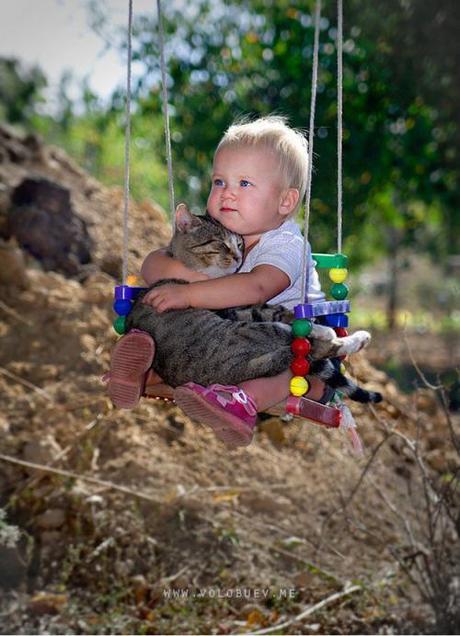 Oxytocin, popularly called the love or bonding hormone, is a powerful hormone produced by our brain’s hypothalamus.
Oxytocin, popularly called the love or bonding hormone, is a powerful hormone produced by our brain’s hypothalamus.
Oxytocin plays an important role in the neuroanatomy of intimacy, specifically in sexual reproduction, in particular during and after childbirth. The name “oxytocin” comes from the Greek words ὀξύς (oksys or “swift”) and τόκος (tokos or “birth”), meaning “swift childbirth,” because the hormone is released in large amounts during a woman’s labor, facilitating birth, maternal bonding, and lactation.
Our bodies also release oxytocin in high concentrations when we are shown kindness and when we fall in love.
Now, research has discovered biochemical evidence that our companion animals really do love us.
Mark Prigg reports for the Daily Mail that Professor Paul Zak, director of the Center for Neuroeconomics at Claremont Graduate University in California, conducted several experiments to measure the levels of oxytocin released when pets interacted with other animals and humans.
“The results were kind of shocking,” he told MailOnline.
At an animal refuge in Arkansas, researchers obtained blood samples from a domestic mixed-breed terrier and a goat that regularly played together, jumping, chasing, and pretend-fighting.
“We took their blood, had them interact in a closed pen, then took their blood again to check for changes in levels. The result was very surprising. The dog dog had a 48% increase, which was big for a human. But the goat’s response was incredible – for humans this it was basically true love. The only time I have seen such a surge in oxytocin in humans is when someone sees their loved one, is romantically attracted to someone, or is shown an enormous kindness. Given oxytocinn came about to help bonding, it seems that domesticated animals form bonds and feel love in the same way we do.”
Zak explains further in an article for The Atlantic:
“We found that the dog had a 48% increase in oxytocin. This shows that the dog was quite attached to the goat. The moderate change in oxytocin suggests the dog viewed the goat as a ‘friend.’
More striking was the goat’s reaction to the dog: It had a 210% increase in oxytocin. At that level of increase, within the framework of oxytocin as the ‘love hormone,’ we essentially found that the goat might have been in love with the dog. The only time I have seen such a surge in oxytocin in humans is when someone sees their loved one, is romantically attracted to someone, or is shown an enormous kindness. [...]
That animals of different species induce oxytocin release in each other suggests that they, like us, may be capable of love. It is quite possible that Fido and Boots may feel the same way about you as you do about them. You can even call it love.“
But only animals that have been domesticated appeared to show this response. “It seems animals more social have higher densities of oxytocin in the front of the brain. This makes it feel good to co-operate.”

Zak’s experiments also found that there are some people who simply aren’t “animal people.” He said, “We were doing some filming with the BBC, so we also took a presenter and had her hold a cure puppy – we found she only had a 3% increase in oxytocin – and she also admitted babies do nothing for her.”
More disturbingly, Zak discovered that 5% of participants in his experiments did not release oxytocin in trust social interactions. These individuals, he says, “have some of the traits of psychopaths.”
Indeed, one of the striking attributes of psycho- or socio-paths is their lack of empathy and remorse.
Like the current occupant of the White House.
~Eowyn

